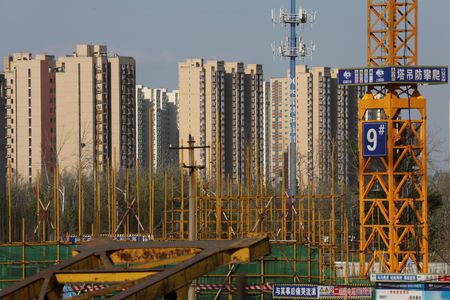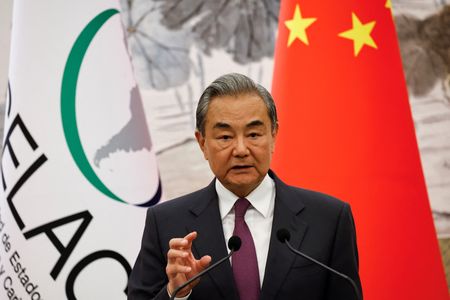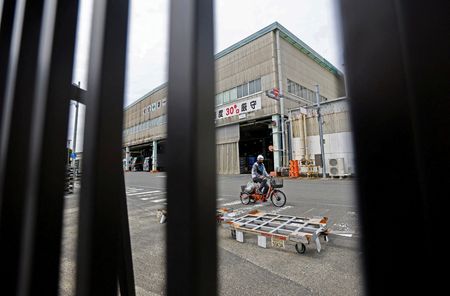By Liangping Gao and Ryan Woo
BEIJING (Reuters) -China’s new home prices stalled in January, official data showed on Wednesday, suggesting declining demand in the crisis-hit property sector is struggling to find a floor despite continued government efforts to prop up sentiment.
Prices were unchanged month-on-month, according to Reuters calculations based on National Bureau of Statistics data, marking the second straight month of no growth. On a year-on-year basis, new home prices fell 5.0%, narrowing a 5.3% drop the previous month.
Analysts expect the stabilisation of China’s property market, which has experienced a significant slump since 2021, will be a protracted process due to high housing inventory, still bearish demand and a long-term population decline.
“The extended price decline in 2025 lends further support to our long-held view that the property meltdown in China has yet to end, and its fiscal system needs a revamp,” said Nomura in a research note.
The crisis in the sector, triggered by a government-led campaign to rein in property developers’ debt, left many unable to repay debt and complete presold housing units. Home sales have tumbled and confidence sagged.
Official data from January showed unsold new homes totalled 390.88 million square metres in 2024, marking a 16.2% increase from the previous year. Furthermore, new construction starts, measured by floor area, plummeted 23.0% annually last year.
Local governments in many cities give developers unofficial guidance on how much they can adjust prices of new homes, making them an imperfect gauge of market demand.
More than a dozen cities, mostly small ones, said they would loosen or drop restrictions on prices of new homes, according to a report by China Real Estate Association.
Local government efforts to reduce inventory by buying unsold homes and repurposing them for affordable housing are offset by the persistently abundant supply in the secondary market.
Home prices in the secondary market have fallen 30% from their peak, according to Zhang Dawei, a property analyst at Centaline. In January, data showed year-on-year falls in existing home prices of 5.6%, 6.0%, and 8.2% in tier-one, tier-two, and tier-three cities, respectively.
Moody’s ratings estimates this week indicate that secondary market transactions of residential property, which made up 59% of all transactions in 2024, have significantly increased since 2022 and are expected to continue rising.
“We would expect a more sustainable recovery in property sales should there be positive income expectations, stable or rising property price expectations and lower inventory levels that indicate disciplined supply management,” said Moody’s Ratings.
Measures rolled out last year to stabilise the property market include cuts to mortgage rates and minimum down-payments as well as tax incentives to lower the cost of housing transactions, helping to narrow declines in new home prices.
Policymakers pledged more supportive measures this year.
In the central bank’s monetary policy implementation report released last week, the property sector joined the list of key areas marked for more credit support.
(Reporting by Liangping Gao, Yukun Zhang and Ryan Woo; Editing by Sam Holmes and Tom Hogue)











